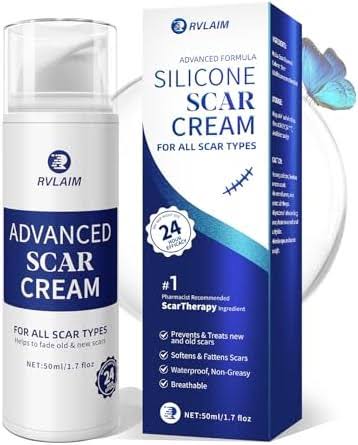Scars are a natural healing process, but they can often be a source of discomfort and self-consciousness. Whether resulting from surgery, injury, burns, or acne, the visibility of scars can impact one’s confidence and quality of life. Over the years, various treatments have emerged to reduce the appearance of scars, ranging from surgical options to topical applications.
Among these, silicone and vitamin-enriched creams have become popular because of their non-invasive nature and promising results. This article explores the role of silicone-based scar cream in scar management and offers insights into their benefits, application, and efficacy.
Benefits of Silicone-Based Treatments
Silicone-based treatments are widely recognized for their effectiveness in scar management. Silicone gels and sheets create a protective barrier over the scar. This helps to hydrate the skin and regulate collagen production. This process can lead to a flattening and softening of the scar tissue, making it less noticeable over time.
Several clinical studies show the efficacy of silicone in scar reduction. Silicone treatments are particularly beneficial for hypertrophic scars and keloids, which are characterised by excessive collagen buildup.
The occlusive properties of silicone help to maintain a moisture-rich environment, which is crucial for optimal healing. Furthermore, silicone is known for relieving itching and discomfort often associated with scar tissue, enhancing overall comfort during the healing process.
Role of Vitamins in Scar Healing
Vitamins are crucial in the skin’s healing process, and their inclusion in topical treatments can significantly improve scar outcomes. Key vitamins that contribute to scar healing include Vitamin E, Vitamin C, and Vitamin A.
Vitamin E has antioxidant properties. It protects the skin from damage and promotes overall skin health. It also aids in moisturising the skin, which can improve the scars’ texture and appearance.
Vitamin C is crucial for collagen synthesis, a critical component of wound healing. Its role in promoting collagen production helps to repair damaged skin and makes the scars less visible. It has a brightening effect on the skin, which fades hyperpigmentation associated with scars.
Vitamin A (commonly found in the form of retinoids) is known for its ability to increase cell turnover and regenerate new skin cells. This process can help to replace scarred tissue with healthy skin, thereby reducing the overall appearance of scars.
Combined Effects of Silicone and Vitamin-Enriched Creams
The combination of silicone and vitamin-enriched creams offers a synergistic approach to scar treatment. Silicone’s ability to create a protective barrier and hydrate the skin, coupled with vitamin healing and regenerative properties, makes for a powerful scar reduction regimen.
When used together, these ingredients can address multiple aspects of scar healing: silicone works on the physical structure and hydration of the scar, while vitamins contribute to cellular repair and antioxidant protection. This combined approach can enhance the overall efficacy of the treatment, leading to more significant improvements in scar appearance.
Application and Best Practices
For best results, apply silicone and vitamin-enriched creams correctly. Here are some best practices to consider:
- Clean the Affected Area: Before applying, ensure that the scarred area is clean and dry. This prevents infections and lets the product adhere better to the skin.
- Follow Recommended Usage: Adhere to the manufacturer’s instructions regarding the frequency and amount of application. Overuse can cause skin irritation, while underuse may not provide the desired results.
- Consistency Is Key: Regular and consistent application is crucial for seeing improvements. Scar treatment requires patience and persistence, as visible results may take several weeks to months.
- Protect from Sun Exposure: Scars are particularly sensitive to UV radiation, which can darken the scar tissue and make it more noticeable. Using a broad-spectrum sunscreen or covering the scar can protect it from sun damage.
Choosing the Right Product for Your Needs
When selecting a scar treatment product, it’s essential to consider factors such as the type of scar, your skin type, and any specific skin concerns you may have. Here are some tips to help you choose the right product:
- Identify the Scar Type: Different scars require different treatments. Hypertrophic scars and keloids may benefit more from silicone-based treatments, while acne scars might respond better to vitamin-enriched creams.
- Consider Skin Sensitivity: For sensitive skin, choose hypoallergenic products devoid of harsh chemicals or fragrances.
- Check the Ingredients: Select products that contain proven ingredients such as silicone, Vitamin E, Vitamin C, and Vitamin A. Avoid products with unknown or questionable components.
Choosing a scar cream that is silicone and vitamin-enriched offers a promising solution for many individuals. It minimises their scars without resorting to invasive procedures. Reducing the visibility of scars requires a comprehensive approach that involves understanding the nature of scars, choosing the right treatments, and applying them consistently.







